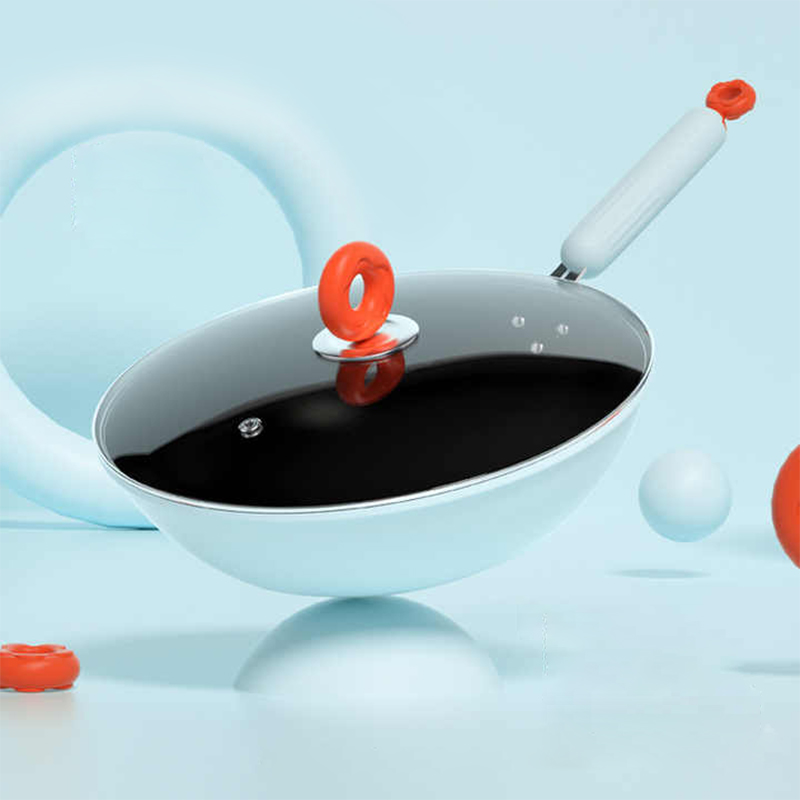2025-09-25
Expanding Role of Household Frying Pans
Household Frying Pans remain one of the most widely used items in both family kitchens and professional cooking environments. Their ability to handle diverse recipes, from quick breakfasts to elaborate dinners, highlights their importance in daily routines. Many households rely on these pans for frying, sautéing, and even shallow braising.
Manufacturing Contributions from Cookware Factory Operations
Cookware Factory facilities play a central role in shaping the performance of Household Frying Pans. Through advanced pressing, forging, and coating processes, factories ensure even heat distribution across cooking surfaces. These improvements support consistent cooking results while also enhancing comfort in handling. Some factories focus on combining different materials to balance weight and durability. This attention to detail demonstrates how industrial production influences everyday cooking tools and strengthens the position of Household Frying Pans in the broader cookware market.

Comparison with Die-Cast Aluminum Cookware
Die-Cast Aluminum Cookware remains an important category in the global market, valued for its ability to heat rapidly and its relatively lightweight structure. Household Frying Pans made from aluminum often appeal to users who prioritize quick meal preparation. However, when compared with titanium or stainless-steel versions, aluminum pans may require additional reinforcement to maintain long-term stability. By presenting Die-Cast Aluminum Cookware alongside other materials, distributors provide customers with varied options tailored to different cooking approaches.
Interaction with Iron Pots and Pans
Iron Pots and Pans continue to represent traditional cooking equipment valued for heat retention and strength. Many households still choose iron pans for slow cooking or dishes requiring high and steady temperatures. In comparison, Household Frying Pans produced from modern materials often require less maintenance and are easier to handle in daily use. Both categories remain relevant: iron products for heritage cooking practices and modern Household Frying Pans for convenience-oriented lifestyles.
Development of Non-Stick Kitchen Pans
Non-Stick Kitchen Pans have influenced the way many consumers approach frying and sautéing. Household Frying Pans with non-stick surfaces reduce the need for excessive oils and simplify cleaning after use. Factories often combine non-stick technology with aluminum or stainless-steel bases, creating products that combine quick heating with easy maintenance. While some cooks prefer uncoated pans for searing or high-heat applications, others continue to favor non-stick options for their practicality. The coexistence of coated and uncoated Household Frying Pans underscores the diversity of consumer preferences.
Consumer Preferences and Market Trends
Market observations suggest that consumers increasingly seek cookware that balances durability, lightweight handling, and ease of maintenance. Household Frying Pans are being adapted to these needs by incorporating ergonomic handles, improved base designs, and surface treatments that enhance usability. Cookware Factory innovations also respond to broader sustainability considerations, exploring methods to extend product lifespans and reduce waste. These adjustments help ensure Household Frying Pans remain aligned with modern culinary and environmental expectations.
Household and Professional Applications
Household Frying Pans are no longer viewed only as tools for domestic kitchens. Many professional chefs integrate them into daily operations because of their reliability and adaptability. The use of frying pans across both household and professional contexts reinforces their versatility and positions them as essential cooking tools.
Conclusion
Household Frying Pans continue to hold a vital position in the cookware market. Supported by Cookware Factory production, they are developed alongside Die-Cast Aluminum Cookware, Iron Pots and Pans, and Non-Stick Kitchen Pans to provide a broad range of solutions for diverse cooking requirements.